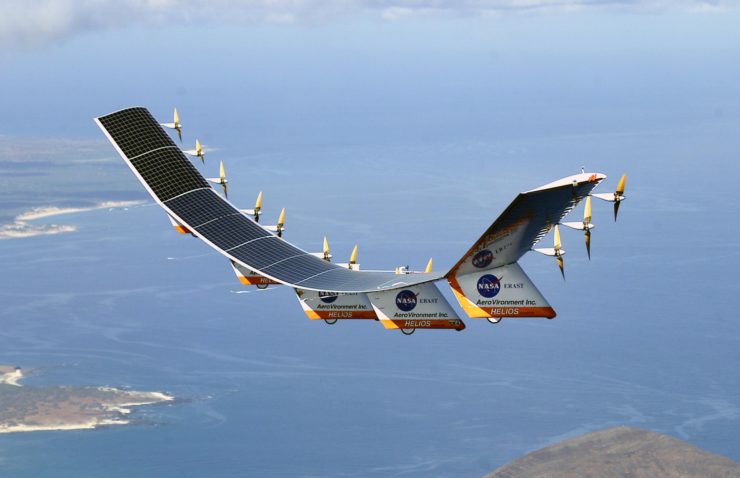New Internet Beaming Drone Ready to Take Off

© NASA
The race to have solar powered drones beam internet from the sky is gaining momentum, at least according to the some recently released news. Initially, tech giants dominated the market such as Facebook and Google. However, they have slowed down their plans to operate unmanned web aircraft with the capability to transmit internet connections to the earth. Now, a partnership between a lesser known firm and NASA are looking to make an internet beaming drone a reality.
The Hawk 30, a huge 10-engine powered drone is a prototype of previous drones from Airbus and Odysseus Plane, a solar driven aircraft that can fly nonstop for several months. The Hawk 30 is a joint product of US based drone maker AeroEnvironment, and Japanese tech group SoftBank. The Hawk is set to embark on a series of test flights which will be launched from Armstrong Flight Research Center.
This development is part of a new $65 million investment from the two companies, and it is related to the previous UAVs AeroEnvironment designed for NASA. Actually, the design and ambition of this project are much like that of its predecessor, Helios. While photos of Hawk 30 are scant, images received from IEEE Spectrum revealed that the internet drone is like a wide-bodied Helios prototype. During an altitude test in 2001, the Helios reached a recorded height of 93,00 feet, the highest for any winged plane. Unfortunately, the aircraft crashed in 2003 while on an altitude test.
It is believed that the Hawk 30 may be several years away from commercial use. But if it succeeds, it has a huge potential for broadening wireless connectivity to remote areas. Several tech giants had made an attempt to create an internet-equipped-drone. Facebook announced the launch of Aquila, a Boeing 737 sized solar powered drone but abandoned the project after the drones were destroyed during landings. Likewise, Google made an attempt into the sector when it launched its internet beaming drone in 2015 only to drop it in favor of Project Loon.
The Hawk is likely to face competition from Airbus, but its connection with NASA is likely to give it the needed boost. Reports from IEEE Spectrum shows that AeroEnvironment has partnered with the space agency to fly the drone up to 10,000 feet in a series of three flight tests. If these initial tests are successful, the drone might even go a higher altitude. Currently, there is no official information on Hawk’s communication capacity, but the company hopes it will help to broaden wireless internet access.
|